The kitchen is often considered to be an essential component of the home, and is a hub for entertaining, cooking and is a general living space. So the flooring for this space must be attractive, durable, resistant to spills, simple to clean and comfortable. Finding the best kitchen flooring options is a critical choice that can affect the overall design and functionality of your home. There are numerous alternatives available each with their own benefits and drawbacks. The options can be overwhelming.
The entire guide will provide the most sought after kitchen flooring options, including its advantages, disadvantages, and their typical cost. We’ll also discuss the most important aspects to take into consideration when making a decision, as well as maintenance tips and latest fashions to help you pick the most appropriate flooring that will last for a long time, and enhance the appearance of the space.
What Makes a Good Kitchen Floor?
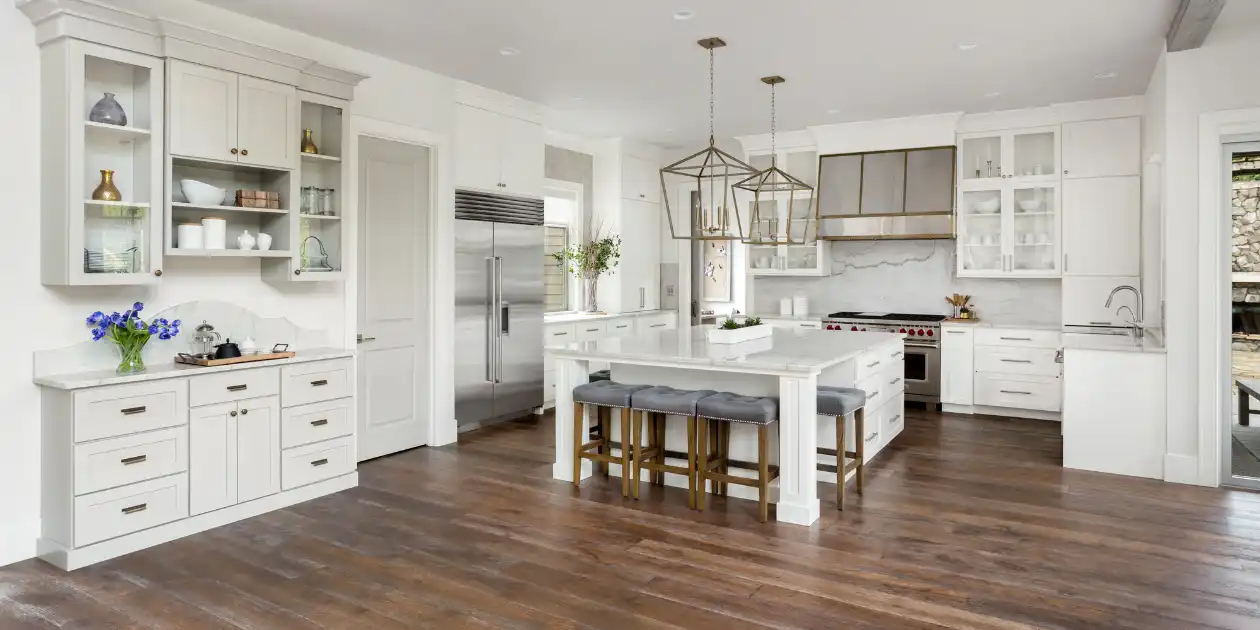
Before we get into specific flooring options, let’s have a look at the key features that define great kitchen flooring.
- Endurance: The floor must be able to stand heavy pedestrian traffic as well as falling dish and possibly damaging collisions.
- Prone to Splashes and Spills: This is the reason flooring should be able to stand up to humidity to stop the flooring from getting damaged, which can lead to mold.
- Simple, Clean and Easy: Fast elimination of liquids, food waste, food particles and grease is crucial for the hygiene of your home.
- Comfort: Floor must have under foot standing for long periods of time, especially when cooking. Thats a reason why comfort is a key aspect.
- Slip Resistant: Non slip surfaces can help prevent accidents from happening especially in areas with high traffic.
- Beauty: The floor should match with the cabinets in your kitchen, and also the overall style of your home.
- Cost: The cost is a crucial factor in the selection of materials and design and construction.
Main Types of Kitchen Flooring Options
Let’s take a look at the most well-known options to kitchen floor flooring
1. Ceramic and Porcelain Tile
Ceramic tiles or porcelain are utilized in kitchens and bathrooms. Both have a good reason to do so. Both are made of clay as well as other natural materials that are heated to incredibly extreme temperature. The ceramic is much more durable however it is also less porous.
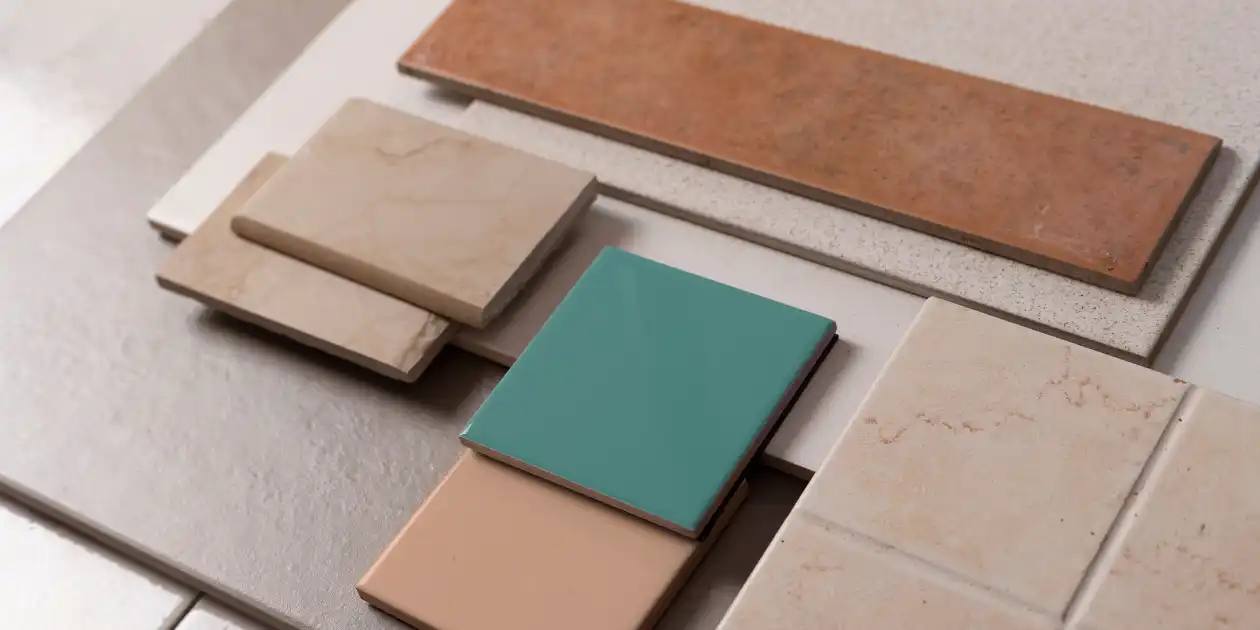
Pros:
- Highly resistant to scratches, dents, and traffic that is extremely weighty.
- When properly grouted and sealed they are nearly impervious to water spills and spills. Porcelain, which is less porous, has the greatest waterproofing.
- Simple to clean and maintain A quick mop or sweep is usually sufficient to ensure they are neat and tidy.
- Large design variety tiles are available in a variety of patterns, colors and the textures. There are tiles that resemble real stone or wood and concrete.
- Hygienic It doesn’t contain allergens or bacteria that can trigger allergies.
- It’s ideal to use close to ovens and stoves.
Cons:
- It is extremely hard as well as cold beneath the feet .
- It is painful to stand on them for extended periods of time and dishes that are dropped on them are likely to break. They can be cold, particularly in colder climates because of the lack of radiant heat beneath.
- It is possible to slide across smooth or polished tiles that can be very slippery in wet conditions. Choose tiles that have COF (Coefficient of Friction) rating that is suitable for areas that experience wet conditions.
- Grout Linings can be stained or collect dirt, requiring frequent sealing as well as cleaning. Repairing damaged tiles can be a challenge.
- Installation is difficult to accomplish by yourself. it requires specific instruments and knowledge along with the experience and expertise. This is why it’s typically done by experts.
| Cost Type | Price (per sq. ft.) |
|---|---|
| Material Cost | $1 – $20 |
| Installation Cost | $5 – $15+ |
Great for kitchens which are frequently used in households with children or pets, or in homes who require the highest durability as well as resistance to the effects of the elements of water.
2. Luxury Vinyl Tile (LVT) and Luxury Vinyl Plank (LVP)
LVT as well as LVP have attracted a lot of interest because of their ability to recreate natural materials such as stones and wood for a fraction of the price and offering several advantages. They’re made with a variety of layers which include the photo layer and an additional layer that protects from wear and tear.
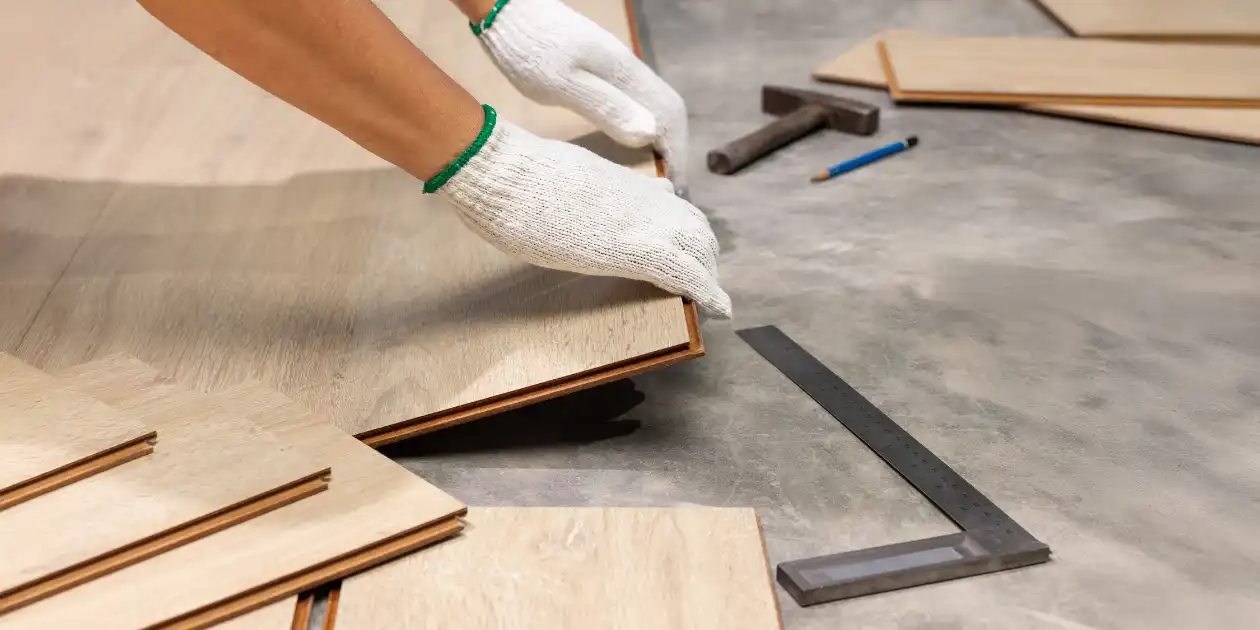
Pros:
- Highly resistant to dents, scratches, and scratch marks. They are great for kitchens with a lot of activity.
- A lot of LVT/LVP products are waterproof and completely safe, making the perfect choice for kitchens vulnerable to splashes.
- More comfortable and warmer than stone or tiles, and provides greater comfort while standing in addition to a more peaceful environment.
- Simple sweeps and a few times of mopping using moist, wet water is all you require.
- It’s generally available in click lock planks or tiles, which make installation much easier and less expensive for DIYers.
Cons:
- It doesn’t show marks or scratches. Although it’s durable but massive scratching or a severe impact can cause damage to the layer of wear.
- Higher Heat Resistant can be damaged through extreme temperatures. So, take care when handling hot pans placed in the ground.
- A limited design choices, While the design is improved, it’s a mere imitative.
- Limited Repairability because tiles and planks may be repaired, but larger damaged areas may require more intensive repairs.
| Cost Type | Price (per sq. ft.) |
|---|---|
| Material Cost | $3 – $10 |
| Installation Cost | $2 – $7+ |
It is the perfect choice for those who are budget-conscious and want to achieve an authentic wood appearance without the hassles and maintenance of wood or families with active children or pets, and for those looking to improve the resistance of their home to flooding.
3. Hardwood
Flooring made of hardwood offer an unbeatable elegance, style and timeless aesthetics for any home. Although some are cautious due to concerns regarding the effect of wear and water modern designs and well maintained floors makes it an attractive and attractive option. Both engineered and solid hardwoods are readily available.
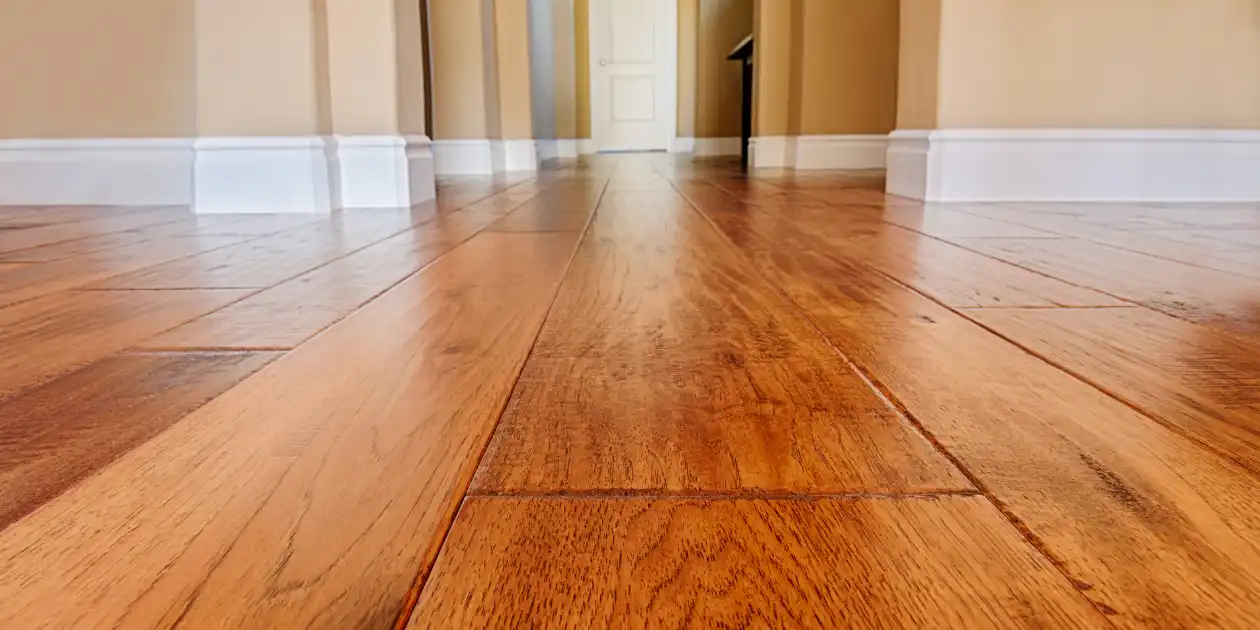
Pros:
- It gives a warm, natural and organic look that will never go out of fashion.
- Enhances the value of your property hence It is a desired attribute for buyer.
- The tech is able to stand up to high foot traffic with no any issue.
- Wear and scratches can be eliminated using sandpaper. The floor can also be refinished and thus extend the lifespan of the floor over an extended period of time.
- Underfoot is more robust and warmer than stones or tiles.
Cons:
- Water may cause warping, cupping or even an increase. Cleaning up spills as quickly as possible is essential.
- Skin could be damaged due to dents and scratches. Although they’re durable, dropping objects or claws of pets may cause scratches.
- Keeps clean the floor’s condition by cleaning it regularly with regular sweeping. Using specific floor cleaners made for wooden floors is essential. Refinishing and polishing each and every now and then could be necessary.
- Materials and installation are typically more expensive than other options.
| Cost Type | Price (per sq. ft.) |
|---|---|
| Material Cost | $0.04 – $0.12 |
| Installation Cost | $4 – $10+ |
The perfect choice for homeowners who like traditional style and want consistency with the wood floors that is in other rooms and who are willing to invest for regular upkeep.
4. Laminate
Laminate flooring is a stylish and inexpensive alternative to stone or wood. It is akin to the look like a photo and is enhanced with an extremely durable wear layer that is fixed to a base comprised from wood (typically HDF or MDF).
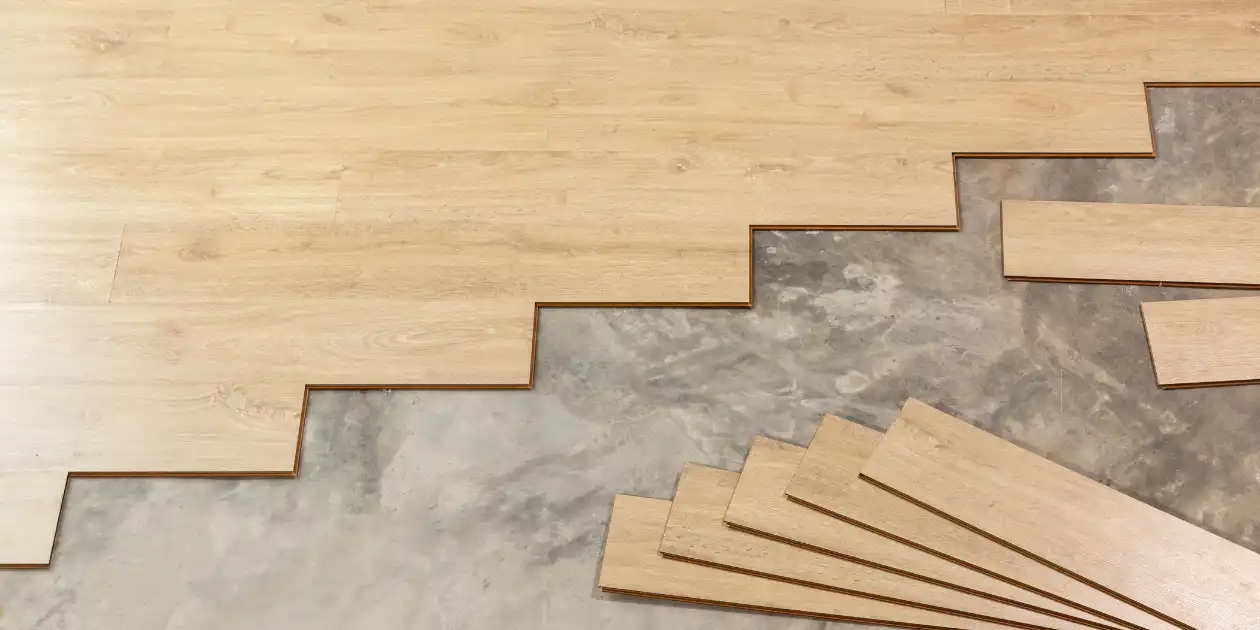
Pros:
- Generally one of the most affordable hardwood flooring options.
- It is durable and scratch resistant. Its layer of wear offers excellent protection against scratches and dents which makes it ideal for kitchens with a lot of activity.
- Clean and easy to maintain, with only regular mopping and tidying.
- Most laminates come with an electronic lock that clicks that makes them extremely simple to install for home owners.
- A Wide selection of designs available to choose the appearance of wood, tiles, and other types of stones.
Cons:
- Core made of wood may expand and warp when exposed to stagnant water. This is not suited to areas where humidity is high.
- Choose waterproof or water resistant laminates that have witnessed huge technological advancements.
- A high force can result in scratches to the material.
- In contrast to hardwoods, laminate can’t be cleaned, or sanded. Planks that are damaged must be fixed.
- A lower cost selling price This tile isn’t in a position to offer the same worth as genuine high end hardwood tiles or top quality.
| Cost Type | Price (per sq. ft.) |
|---|---|
| Material Cost | $5+ |
| Installation Cost | $2 – $6+ |
The best choice for homeowners on a budget looking for an option that is simple to make and have the appearance of stone or wood, without the expense or requirement to maintain it.
5. Natural Stone (Marble, Granite, Travertine, Slate)
Stone flooring made from natural stone are breathtaking in their beauty, elegant and extravagant. Each tile and slab is unique and creates a unique look for cooking areas.
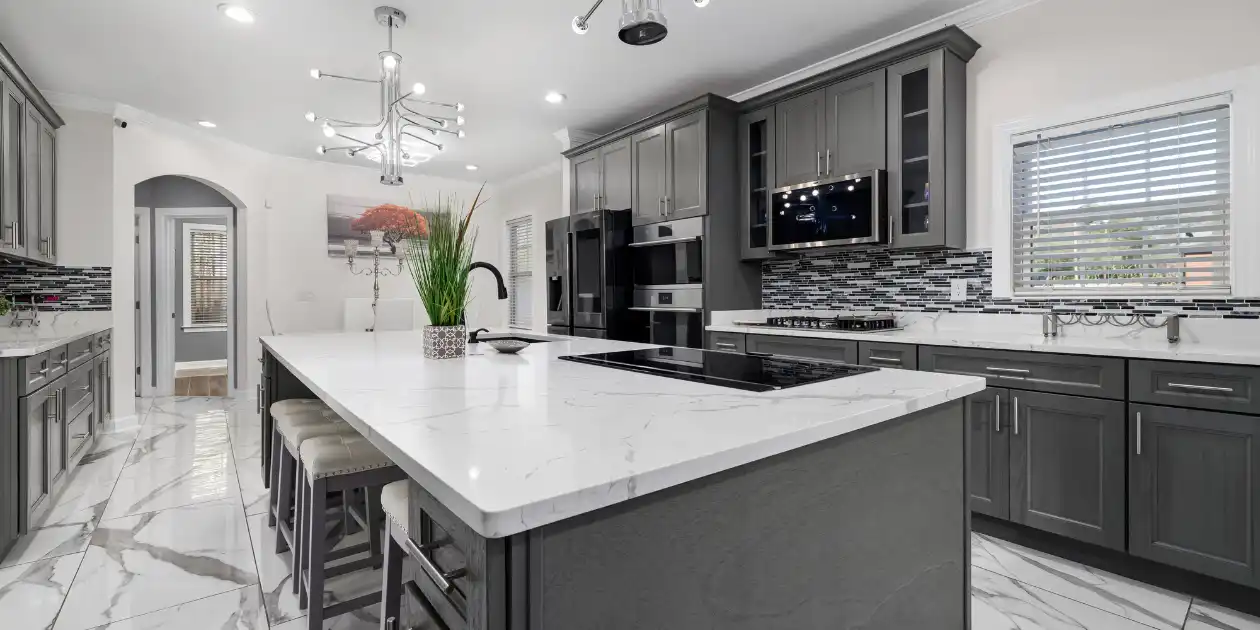
Pros:
- It creates an elegant modern, elegant aesthetic.
- Tough and durable in the face of damage and wear.
- It increases the value of homes. It’s a characteristic with high end design that draws buyers with high expectations.
- Each piece is identical and creates an ideal flooring.
- It’s generally cool, which is beneficial when temperatures are scorching hot.
Cons:
- The most costly flooring option for flooring installation as well as the materials.
- This porous material can be affected by staining requires regular sealing to protect against the stains that are that are caused by wine, food and various other oil. Acids may cause etching or scratching of stones.
- It is heavy and challenging thing to put in. It requires a sturdy subfloor and a skilled installation.
- Hard and cold beneathfoot, just like ceramic tile or porcelain tiles, it can be difficult to manage objects that are dropped, and they can be uncomfortable to sit on.
- Stone surfaces polished with polish are very slippery when they are in damp conditions.
| Cost Type | Price (per sq. ft.) |
|---|---|
| Material Cost (Stone) | $3 – $20 (varies by type and quality) |
| Installation Cost | $6 – $9+ |
Ideal for luxurious kitchens and homeowners who want the most beautiful aesthetics and a distinct natural appearance and who have a substantial budget as well as the desire to keep their home with the utmost care.
6. Vinyl Sheet
Sheet flooring made of vinyl is sold in huge seamless rolls, which are perfect for DIY installation as well as areas with high moisture. It’s a robust, economical and water proof option.
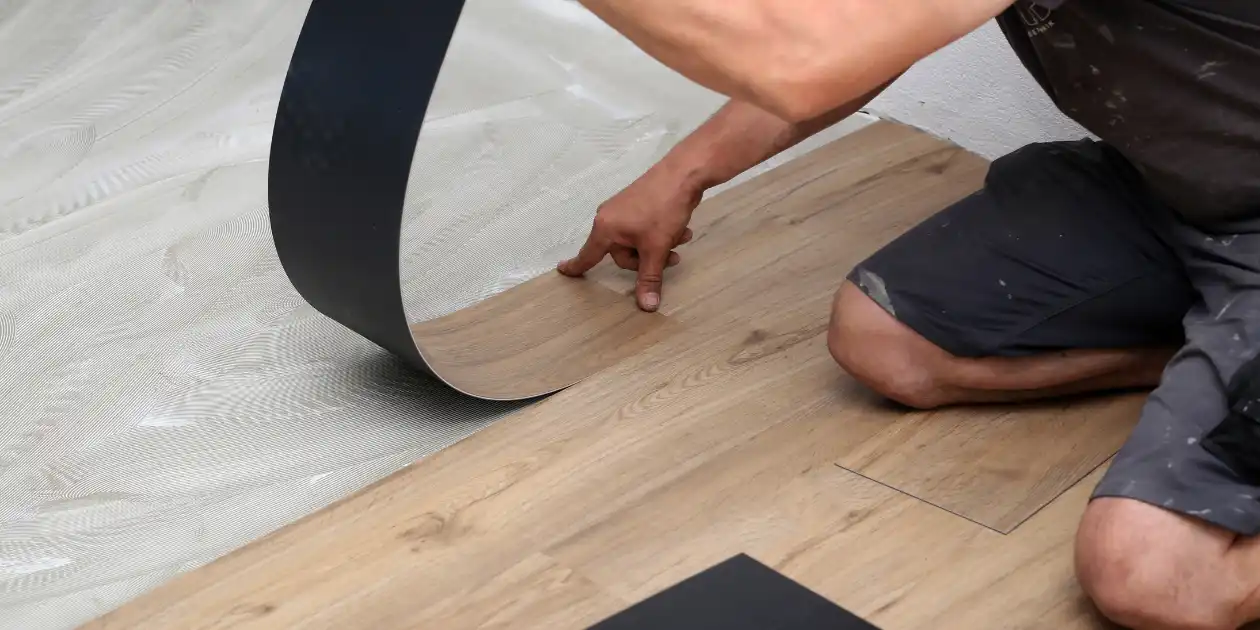
Pros:
- Typically the lowest cost per square foot.
- Because it comes in large sheets with a very small seam, it provides a better protection from the rain.
- Excellent stain resistant and easy to remove.
- Easy sweeping, and moist mopping keeps the area clean and fresh.
- It’s more warm and comfy than tile.
- Installation yourself is simple. It is able to be installed by DIY specialists with experience.
Cons:
- Resilient sharp objects or furniture with a lot of weight can result in scratches to the surfaces.
- It can be difficult to repair. repairs usually require patching, which is assessed.
- It could reveal marks of dent caused by heavy objects: Furniture or appliances could leave permanently marked markings.
- Although it’s been improved but it doesn’t appear the same as other materials, like LVT/LVP.
| Cost Type | Price (per sq. ft.) |
|---|---|
| Material Cost | $0.50 – $4+ |
| Installation Cost | $1 – $5+ |
The best choice for Kitchens and homes with a budget to wash clothes, or anyone who is looking for the best water resistance and ease of cleaning.
Factors Influencing Kitchen Flooring Cost
The price related to installing kitchen flooring options isn’t only about the price of flooring materials, but also the area. A variety of other elements are essential:
- The Material: The information above provides a description of different materials that are offered at different prices.
- Qualitative and Brand: The best versions are more expensive.
- Subfloor Preparation If your floor is bad condition, is uneven or requires need to be leveled the issue is reflected in the cost of materials and labor.
- Dimensions and Forms of rooms The kitchens that are larger will need more material. A complicated design that has many angles or corners could lead to an increase in the time needed to construct and fill more space.
- DIY vs professionalls installation: DIY are cheaper in terms of labour costs however it will take a some time and could require the rental of equipment. Professional installation guarantees quality and a guarantee of job.
- Geographically Located: The costs of labor for installers can differ significantly based on the location in which they reside.
- Removal of Floors: The cost for the demolition and recycling of flooring older than can be added to the expense.
- Underlayment: Some flooring types require specific underlayments for sound absorption, insulation, or moisture barriers.
- Radiant Heating If you choose to install radiant heating on your flooring, it will be the cost of flooring and the installation.
Maintenance and Longevity of Kitchen Floors
Cleansing your floor regularly is essential to prolong the life and appearance of your kitchen’s floor.
- Regular cleaning removes the grit and dirt that can damage your surface.
- Clean up spills immediately particularly on laminate or wood to avoid staining and damage because of water.
- Make sure you use appropriate cleaning products for your floor. Use only cleaners that are specially created for flooring. Avoid harsh chemical cleaners and harsh cleaning equipment.
- Use felt pads under the legs of tables and chairs to prevent them from getting damaged.
- When you own natural or tiled stones ensure that your grout lines as well as porous stones are regularly maintained on a basis in accordance with the guidelines of the manufacturer.
- The floors of wood are refinished every 7 to 10 years or, if required to maintain their appearance.
Common Mistakes to Avoid For Kitchen Flooring Options
- A subfloor that is not in good condition could cause damage to even the finest floor materials. Be sure that your subfloor is dry and even.
- A few floors require the expertise of a professional. If you attempt a difficult DIY project that you aren’t familiar with that you have, you could make costly errors.
- An appropriate underlayment will increase the comfort in your home, offer solid insulation and protect against the negative effects of water.
- Families with pets and children needs an extra-durable and waterproof flooring as unlike the adult.
- While aesthetics are crucial, kitchen floors must be functional for the needs of the kitchen.
- Although price can be important, opting for the least expensive option is likely to have a shorter life span and more swift replacing.
Conclusion
The best floor for the kitchen can be all about striking the right balance between aesthetics quality, durability, and ease of maintenance. It isn’t a problem if you love the timeless appeal in hardwood floor, or the durability ceramic tiles or pliability and functionality in vinyl’s luxury. There’s a kitchen flooring options appropriate for any style and design of your home. If you put in an effort to consider the pros and cons of each kind of flooring, and the costs that come with it, as well as planning for routine maintenance, you’ll be able to pick the kitchen flooring you’ll be happy with for many years to come. It’s a great foundation to the interior of your home.
FAQs
What are the best kitchen flooring options?
Ceramic and porcelain tiles, as well as natural stone, are considered the most durable options and are highly resistant to dents, scratches, and heavy use. Luxury Vinyl Tile (LVT) and Luxury Vinyl Plank (LVP) are also extremely durable and strong choices.
What’s the best waterproof flooring option for kitchens?
100% waterproof options include porcelain ceramic tiles (when properly grouted and sealed) and many luxury vinyl (LVT/LVP) products. Sheet vinyl is also a great water-resistant option due to its continuous surface.
Is hardwood flooring a good choice for kitchens?
Hardwood flooring is stylish and can increase your home’s value, but it requires immediate cleanup of spills and is more prone to water damage than vinyl or tile. Modern engineered hardwoods have improved water resistance, but regular maintenance is essential.
How should I clean kitchen floors?
Tile/Stone: Sweep or vacuum regularly, then mop with a neutral pH cleaner. Grout may need periodic cleaning and sealing.
Hardwood: Sweep or vacuum, then use a wood-specific cleaner with a damp (not wet) mop. Avoid excess water.
Laminate/Vinyl: Sweep or vacuum, then damp mop with a manufacturer-recommended cleaner. Do not soak the floor.
What’s the difference between porcelain and ceramic tile?
Porcelain tile is a type of ceramic tile made from denser, finer clay and fired at higher temperatures. This makes it less porous, tougher, and more water-resistant than standard ceramic tile ideal for high-moisture and outdoor areas.
Can I install kitchen flooring myself?
Some flooring types are easier to install than others. Laminate, sheet vinyl, and click lock LVT/LVP are DIY-friendly. Ceramic/porcelain tile, natural stone, and traditional hardwood usually require special tools and professional installation for best results and longevity.
How long does kitchen flooring last?
Tile/Stone: 50+ years (often outlasts the building)
Hardwood: 25–100+ years (can be refinished multiple times)
LVT/LVP: 20–30 years
Laminate: 10–25 years
Vinyl Sheet: 10–20 years
What is the cost to install tile flooring in a kitchen?
Installation costs generally range from $1 to $15+ per square foot, depending on the material, project complexity, location, and whether you hire a professional or DIY. Natural stone and intricate tile patterns are at the higher end of the range.

